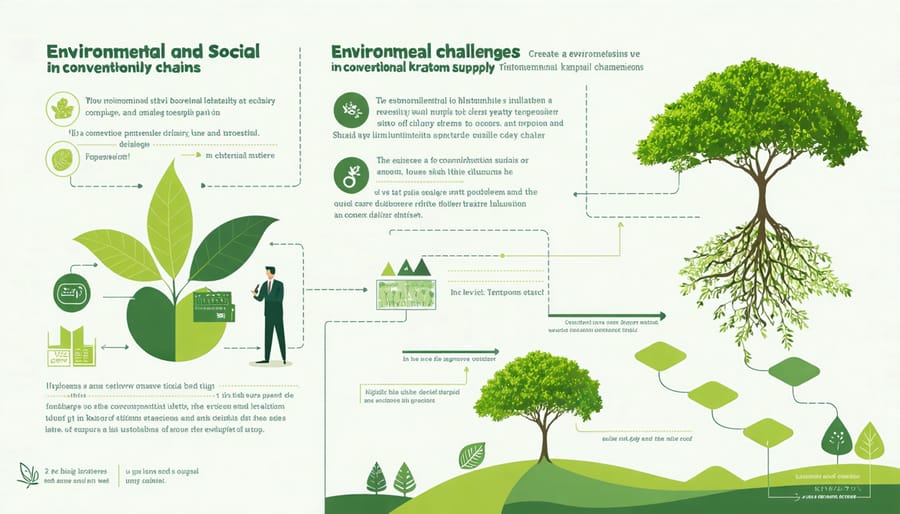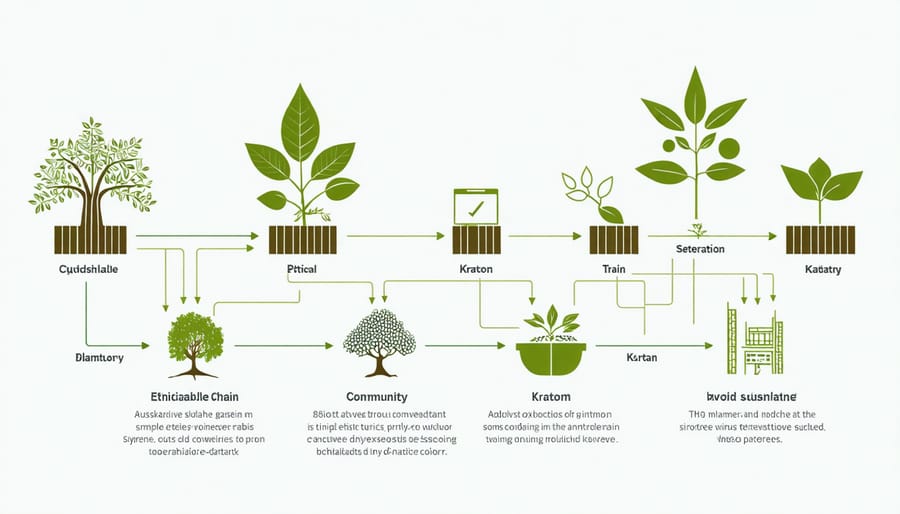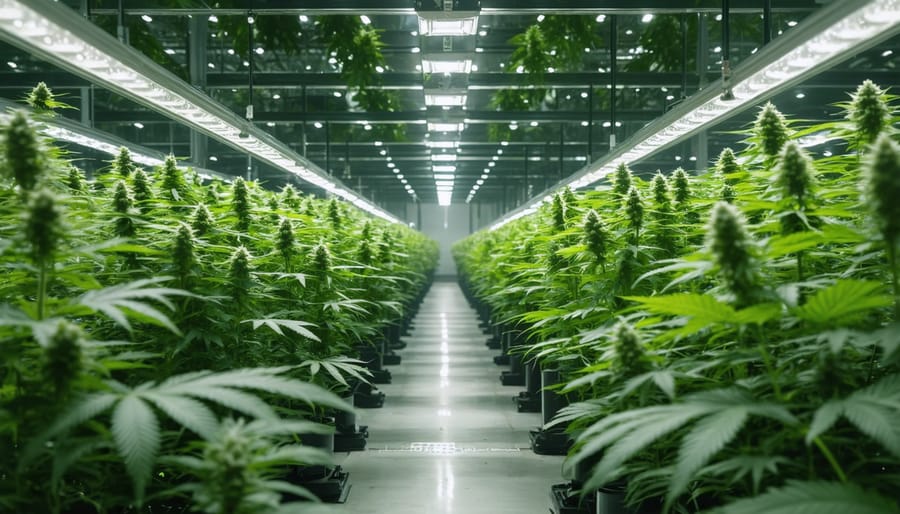Implement ecosystem-friendly cultivation by partnering with Indigenous communities to harness traditional ecological knowledge for sustainable kratom farming practices. Incorporate agroforestry techniques that maintain biodiversity and soil health, ensuring a balanced coexistence between kratom plantations and local flora and fauna. Source kratom responsibly through verified suppliers who prioritize ethical harvesting, reducing harm to natural habitats and promoting fair labor conditions. Explore innovative, green supply chain solutions that minimize environmental impact, like using renewable energy for most processing and transportation needs. Discover kratom for sale that’s sourced with sustainability in mind, reinforcing commitment to responsible consumption.
Understanding Kratom: A Natural Resource
Kratom Defined
Kratom, derived from the leaves of the Mitragyna speciosa tree native to Southeast Asia, is making waves in various industries due to its unique properties and uses. This natural product contains alkaloids, primarily mitragynine and 7-hydroxymitragynine, which interact with the human body’s receptors, offering effects that range from pain relief and energy enhancement to mood elevation. Traditionally used in its indigenous regions for centuries, kratom has found applications in modern natural wellness sectors as an alternative to synthetic painkillers and stimulants. Its versatility extends into research and innovation, where sustainable harvesting practices are vital to preserving biodiversity and ensuring a steady, ethical supply. Integrating Indigenous knowledge and Canadian resource management strategies, stakeholders aim for a balanced approach that respects both ecological integrity and community well-being.

Global and Canadian Context
Kratom, a tropical plant known for its versatile uses, plays a significant role in the global resource industry by offering an alternative to synthetic products. As the world shifts towards more sustainable practices, integrating kratom into the supply chain highlights opportunities to bolster environmentally responsible sourcing. In the Canadian context, this aligns with the increasing focus on sustainability within the natural resources sector, complementing efforts such as the advancement of renewable energy in Canada. This perspective is shared by Indigenous communities, who emphasize the importance of preserving natural ecosystems. By embracing traditional ecological knowledge and innovative practices, Canada can lead in establishing ethical supply chains that respect both the environment and cultural heritage, fostering a collaborative approach to global challenges.
Challenges of Conventional Kratom Supply Chains
Environmental Impact
The environmental impact of kratom production and distribution has become an increasingly pertinent issue as demand for this natural resource grows. Traditional methods of harvesting often lead to deforestation, soil degradation, and the disruption of local ecosystems. However, innovative approaches are emerging to mitigate these effects, paving the way for more sustainable supply chains. By integrating permaculture practices and agroforestry, farmers can cultivate kratom while preserving biodiversity and maintaining soil health. These methods not only support ecological balance but also ensure a stable supply of kratom for future generations.
Indigenous communities, custodians of vast ecological knowledge passed down through generations, are playing a crucial role in these sustainable shifts. Their expertise in managing land resources sustainably offers valuable insights into developing resilient and environmentally friendly kratom supply chains. In Canada, collaborations with Indigenous groups have sparked interest in ethically sourced and sustainable natural products, integrating traditional knowledge with modern innovation. These initiatives emphasize the importance of inclusive partnerships in reducing the ecological footprint and fostering a sustainable future for kratom cultivation.

Social and Economic Issues
Kratom harvesting presents both social and economic challenges for communities involved, often rooted in traditional supply chain practices that can undermine sustainability and community well-being. Many Indigenous communities, particularly in Southeast Asia, rely heavily on kratom as a key economic resource. However, the lack of fair trade policies and insufficient infrastructure often leave these communities vulnerable to exploitation and economic instability. Sustainable supply chain innovations offer a path towards more equitable economic opportunities that honor Indigenous knowledge and stewardship practices. By integrating fair compensation and capacity-building initiatives, these communities can enhance their resilience in the face of fluctuating market demands.
Moreover, the demand for kratom in international markets, including Canada, necessitates a shift towards policies that support both environmental conservation and human rights. Collaborative efforts involving Indigenous leaders, industry stakeholders, and policymakers can foster a more transparent supply chain that respects cultural values and conserves vital ecosystems. By embracing these sustainable models, kratom harvesting can be transformed from a source of economic vulnerability into a commitment towards shared prosperity and ecological balance.
Advancing Sustainable Practices in Kratom Supply Chains
Sustainable Harvesting and Processing
Sustainable harvesting and processing of kratom is crucial for minimizing its environmental impact, fostering a balanced ecological relationship. By engaging Indigenous communities, who often possess a deep-rooted understanding of local ecosystems, innovative methods are being developed to sustainably manage kratom resources. These communities advocate for practices such as selective pruning rather than clear-cutting, allowing the plants to naturally regenerate and maintain biodiversity in their habitats.
Technological advancements also play a role, with solar-powered drying systems reducing the carbon footprint of traditional processing methods. These systems efficiently harness renewable energy, cutting reliance on fossil fuels. In Canada, efforts emphasize environmental stewardship by promoting circular economies where waste by-products are repurposed as organic fertilizers, enriching soil health and ensuring sustainable land use.
Collaboration across sectors is key—policymakers partnering with environmental scientists and Indigenous leaders to enhance resource management frameworks. Through shared knowledge and respect for diverse perspectives, the kratom industry is gradually evolving into a model of ecological harmony, demonstrating the potential of sustainable practices to coexist with commercial viability.
Ethical Sourcing and Community Collaboration
Ensuring ethical sourcing and community collaboration in kratom supply chains is paramount for fostering sustainable and fair trade practices that benefit both the environment and local communities. A key strategy involves establishing transparent, fair trade agreements directly with Indigenous farmers who have nurtured the kratom plant for generations. By empowering these communities through equitable pricing and long-term partnerships, we support their development and ensure the preservation of their cultural heritage and ecological knowledge.
Integrating Indigenous perspectives is vital, particularly when it comes to sustainable harvesting methods that align with traditional practices. For instance, by recognizing and respecting these methods, we can avoid overharvesting and ensure the longevity of kratom forests. In addition, investing in community-driven initiatives, such as education and infrastructure development, can further bolster local economies and create resilience against market fluctuations.
Collaborative efforts among stakeholders, including policymakers and resource management professionals, are crucial in crafting regulations that align with environmental sustainability and ethical considerations. Encouraging local leadership in these initiatives not only respects Indigenous sovereignty but also fosters a sense of shared responsibility in nurturing sustainable kratom supply chains for future generations.

The Role of Technology
The infusion of technology in kratom supply chains promises a future where sustainability is not only possible but practical. Leveraging tools such as blockchain for transparent tracking and drones for monitoring cultivation impacts, stakeholders can precisely manage resources. This innovative approach is being championed in Canada, where technological advancements align with Indigenous knowledge to sustainably harness natural resources. By utilizing real-time data analytics, communities gain insights into optimal harvesting times, reducing environmental footprints. Such collaboration ensures that both economic and ecological needs are met, fostering a harmonious relationship between traditional practices and cutting-edge solutions. This synergy propels kratom towards a sustainable future.
Indigenous Perspectives on Kratom Sustainability
Traditional Knowledge and Modern Practices
Indigenous communities have long harnessed the power of kratom, using traditional knowledge passed down through generations to maintain the delicate balance of their ecosystems. These insights provide invaluable lessons for modern sustainable practices. By incorporating Indigenous perspectives, we can ensure that kratom supply chains are not only efficient but also respectful of the environment and its people. In Canada, there is an increasing recognition of the importance of blending traditional methods with modern science to foster sustainable resource management. Indigenous approaches prioritize ecosystem health and cultural significance, ensuring that harvesting methods do not harm the natural habitats. Collaborative efforts between Indigenous communities and industry stakeholders can lead to innovative solutions that benefit both the environment and local economies, thereby paving the way for a sustainable future in the kratom supply industry.
Collaborative Initiatives
In recent years, collaborative initiatives have emerged as powerful forces in crafting sustainable kratom supply chains, especially through alliances between Indigenous communities and resource companies. These partnerships honor traditional ecological knowledge and support environmental stewardship, ensuring the continued health of kratom-rich ecosystems. An inspiring example can be found in the collaborative efforts underlying Indigenous climate partnerships, which emphasize respect for ancestral lands while aiming for sustainable resource utilization. In regions where kratom is a vital part of the local economy, Indigenous groups work closely with industry leaders to establish harvesting techniques that protect biodiversity. By combining traditional practices with modern scientific insights, these collaborations create robust, sustainable models that benefit both the planet and the communities relying on these resources for cultural and economic prosperity.
The Future of Sustainable Kratom Supply Chains
Policy and Regulation
Governmental policies play a pivotal role in promoting sustainable kratom supply chains. By establishing clear guidelines and regulations, policies can help ensure that kratom cultivation and harvesting practices align with environmental sustainability goals. Such regulations incentivize practices that preserve biodiversity and protect natural habitats from over-exploitation. For instance, integrating Indigenous knowledge into policy-making processes can enhance sustainable practices by respecting traditional ecological wisdom. Collaboration between policymakers, Indigenous communities, and the natural resources sector can foster innovative solutions that balance economic benefits with environmental stewardship. This approach not only safeguards the ecological integrity of kratom ecosystems but also supports the livelihoods of local communities reliant on these resources.
Looking Ahead
In the pursuit of sustainable kratom supply chains, future trends focus on technological innovations and collaborative strategies that incorporate Indigenous wisdom. Precision agriculture, featuring satellite monitoring and AI, stands to enhance the efficiency of kratom cultivation while minimizing environmental impact. Partnerships between Canadian researchers and Indigenous communities are pioneering methods to balance resource extraction with ecological preservation. These collaborations cultivate a shared understanding of conservation practices, ensuring that the implementation respects traditional knowledge and promotes biodiversity. By embracing these forward-thinking approaches, stakeholders can foster a kratom supply chain that is resilient, sustainable, and harmonious with both local communities and ecosystems.
Conclusion
Sustainable kratom supply chains offer a transformative approach to preserving both the environment and the communities that rely on this versatile resource. By embracing sustainable practices, we can mitigate the negative environmental impacts often associated with traditional supply methods, such as deforestation and biodiversity loss. This shift is crucial not only for protecting the natural ecosystems where kratom thrives but also for ensuring the economic well-being of the local and Indigenous communities involved. These communities, particularly in regions like Southeast Asia, have utilized kratom for generations, and their expertise and traditional knowledge are invaluable in crafting sustainable solutions.
Incorporating innovative practices, such as agroforestry and fair-trade certification, in the production and distribution of kratom ensures that the demand for this plant is met responsibly. As Canada and other nations explore the benefits of kratom, it’s vital to integrate Indigenous perspectives and knowledge into developing these sustainable frameworks. By prioritizing transparency and ethical sourcing, we contribute to a balanced natural resource industry that respects and honors the interconnectedness of all its stakeholders. As we move forward, the collaborative efforts of governments, industry professionals, and local communities will be pivotal in establishing a harmonious and enduring kratom supply chain that serves as a model for other natural resources.




